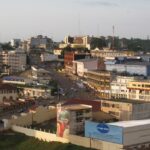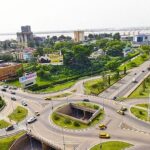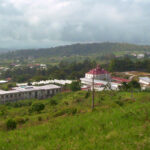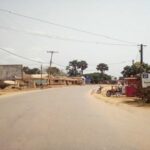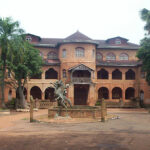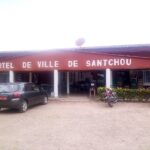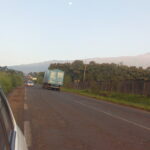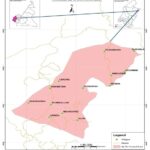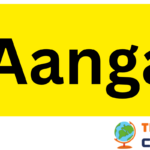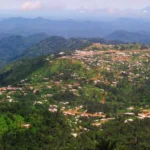Ngaoundéré
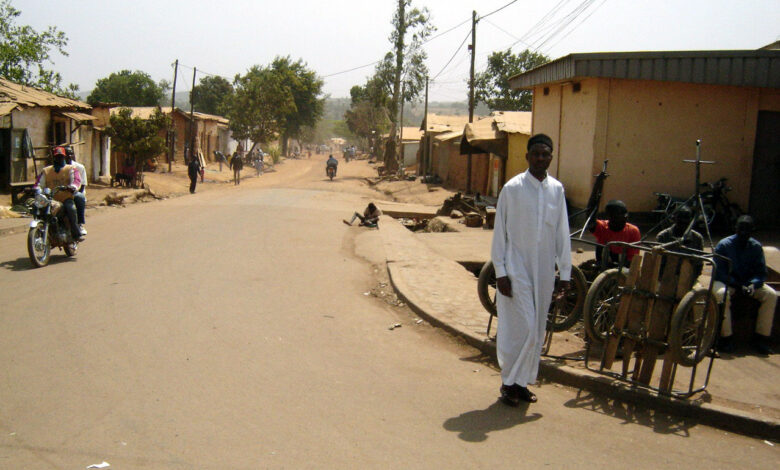
Ngaoundéré, also known as N’Gaoundéré, is the capital of Cameroon’s Adamawa Region. It had a population of 152,700 in 2005, but according to the film “Les Mairuuwas – Maitre de l’eau” produced by the University of Tromsø, the population has rapidly increased to 1,000,000 as of October 2016. This growth can be attributed to mass immigration from the Central African Republic and concerns about security due to Boko Haram activities in northern Cameroon.
The city is situated at the northern terminus of the railway connecting to Yaoundé, and it is also served by Ngaoundéré Airport. Notable attractions in the city include the Lamido Palace and the Lamido Grand Mosque. The town derives its name from a nearby mountain located on the plateau, which is called “navel mountain” in the local Mbum language.
| Country | |
|---|---|
| Region | Adamawa |
| Department | Vina |
| Elevation
|
1,212 m (3,976 ft) |
| Population
(2005)(Census)
|
|
| • Total | 152,698 |
| Climate | Aw |
Ngaoundéré’s origins can be traced back to around 1835 when it was established by the Fulani leader Ardo Njobdi, although the site had previously been the capital of the Mbum people. Throughout the 19th century, the Fulani maintained control over the area, and in 1882, it was visited by Robert Flegel. In 1894, Ardo Muhammadu Abbo signed a protection agreement with German explorer Siegfried Passarge, and subsequent agreements between Germany, Britain, and France placed the region under German influence. The German army forcibly occupied the town on August 20, 1901. During World War I’s Kamerun campaign, a skirmish occurred between German and British troops in Ngaoundéré on July 29, 1915. Following the war, the area came under French occupation until Cameroon gained independence.
Geography
Population
Before the Fulani invasion in the 19th century, the Mbum people were the original inhabitants of the surrounding area. Since the founding of Ngaoundéré, the Fulani have ruled the region alongside the Mbum, who are protected under Islamic law. The ruler must be of Fulani descent from the paternal side and trace his lineage back to the first Lamido of Ngaoundéré, Ardo Njobdi of Boundang. On the maternal side, the ruler is expected to have Mbum ancestry in order to represent the entire population. As the largest city in the Adamawa Region, Ngaoundéré attracts settlers from the surrounding rural areas, including Díi from the north, Gbaya from the Meiganga area, and Pere from the west. The completion of the railway in 1973 led to a significant population expansion, with a considerable number of newcomers coming from outside the Adamawa Region. This is evident in the contrasting Grand Marché, located next to the Grand Mosque and predominantly housing local merchants, and the larger Petit Marché situated northwest, which primarily serves the population originating from the southern regions of Cameroon.
Climate
Ngaoundéré has a tropical savanna climate (Köppen climate classification Aw).
Communications
Transportation: Ngaoundéré serves as a vital communications hub, connecting the southern and northern regions of Cameroon.
Rail: The Camrail railway terminates in Ngaoundéré, and Ngaoundéré Central Station is always bustling with activity. In 2015, an extension of the railway spanning 700 km to Chad was approved. The Cameroonian government and the African Development Bank Group signed a memorandum in 2017 to conduct feasibility studies for the railway extension from Ngaoundéré, the regional capital of Adamawa in northern Cameroon, to Chad.
Road: A paved road, although it has some potholes, links Ngaoundéré to Garoua, Maroua, and Chad. The road facilitates the transportation of goods such as bananas, fruits, and general merchandise from the south. In return, the north supplies cotton from the north and Chad, as well as cattle from Adamaoua, to the southern regions.
Air: Ngaoundéré Airport has a 1.6 km runway capable of accommodating aircraft like the Boeing 737. In the past, the airport had regular flights to Yaoundé, Douala, Garoua, and N’Djamena, Chad. However, due to economic decline and the decline of Cameroon Airlines, the national carrier, the airport currently experiences minimal or no air traffic. The airport’s ICAO code is FKKN, and the IATA code is NGE.
Radio: Ngaoundéré is connected to the Cameroonian microwave network, although the system’s reliability is limited. The Fulani radio station, Sawtu Linjiila, is located in the city.
Internet: Numerous private companies in Ngaoundéré have two-way satellite communications, and there are several cybercafés in the city.
Religion
Among the places of worship, they are predominantly Muslim mosques. There are also Christian churches and temples. The Diocese of Ngaoundéré is a diocese of the Catholic Church whose current bishop is Emmanuel Abbo.
